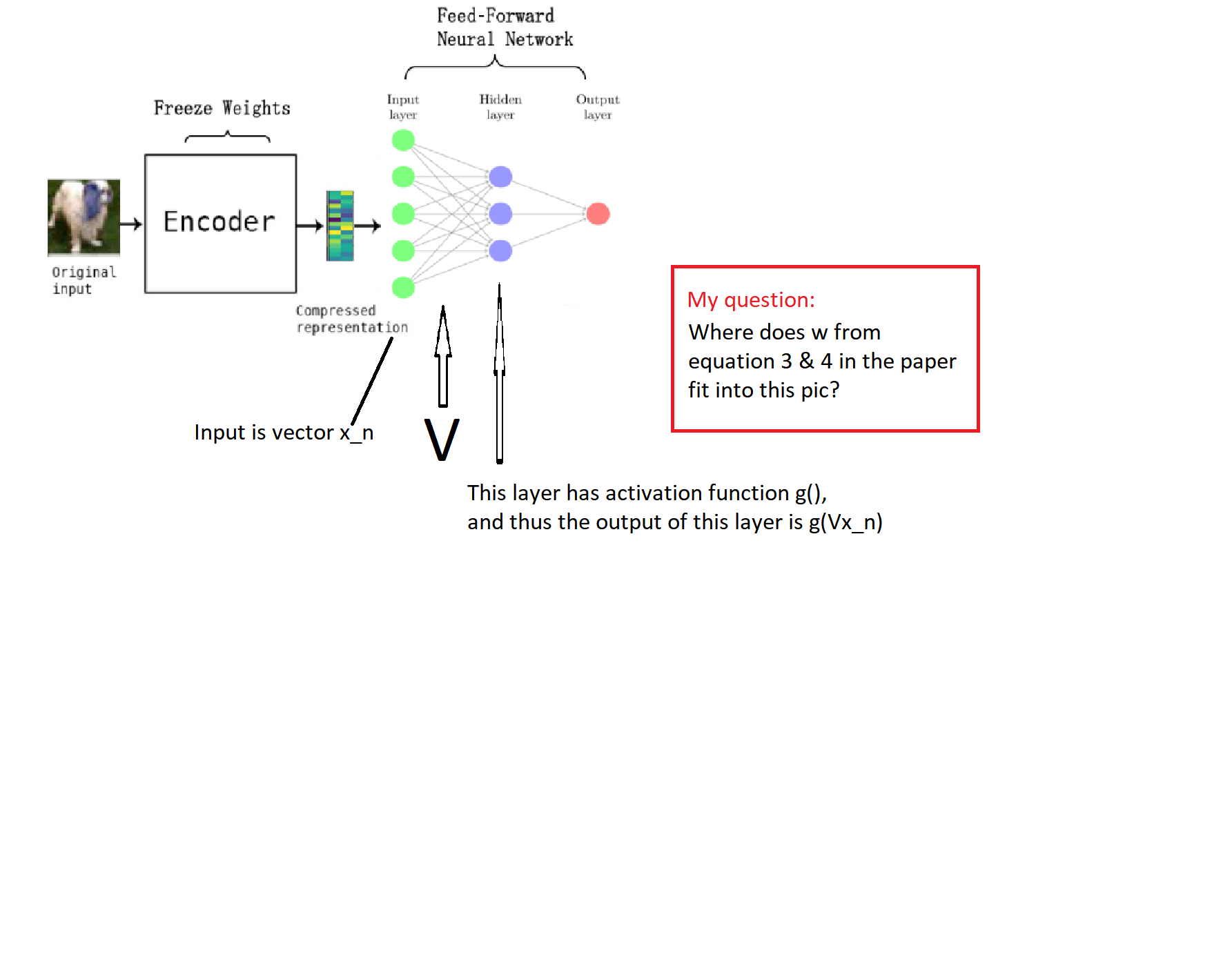oc-nn
 oc-nn copied to clipboard
oc-nn copied to clipboard
Is it a right implementation for OC_NN?
Hello,
First, thank's for good works.
I have a question for implementation of the OC_NN loss function in this code.
I think the function "custom_ocnn_hyperplane_loss" In src.models.OneClass_SVDD denote the loss function for OC_NN, but this function's objective function looks different from the paper's equation (4). I feel this implementation is quite similar to original OC_SVDD.
Is it a right implementation for OC_NN?
@SpecialMOB I'm trying to understand this source code too.
Currently in OneClass_SVDD.py I see:
def custom_ocnn_hyperplane_loss(self):
r = rvalue
center = self.cvar
# w = self.oc_nn_model.layers[-2].get_weights()[0]
# V = self.oc_nn_model.layers[-1].get_weights()[0]
# print("Shape of w",w.shape)
# print("Shape of V",V.shape)
nu = Cfg.nu
def custom_hinge(y_true, y_pred):
# term1 = 0.5 * tf.reduce_sum(w ** 2)
# term2 = 0.5 * tf.reduce_sum(V ** 2)
term3 = K.square(r) + K.sum( K.maximum(0.0, K.square(y_pred -center) - K.square(r) ) , axis=1 )
# term3 = K.square(r) + K.sum(K.maximum(0.0, K.square(r) - K.square(y_pred - center)), axis=1)
term3 = 1 / nu * K.mean(term3)
loss = term3
return (loss)
return custom_hinge
Re term1 and term2 being commented out, I'm guessing the author was testing turning off this regularization.
Re the term3 which is not commented out, I don't understand all of it's parts. Specifically, both of the K.square(r) terms. Where did these K.square(r) terms come from? In addition, the K.sum(K.max(...)) is not quite what I expected from the paper. Overall, I was expecting custom_ocnn_hyperplane_loss to look like eq 4 in the paper:
It's also not clear to me the use of X_n: vs x_n in the paper. Below shows cropped version of eq 3, which is what I think eq 4 should expand to (except the X_n: vs x_n issue/concern) to compare:
Is X_n: suppose to be a matrix where each col is some x_n? It seems like x_n should be a vector, but I'm not convinced from the notation.
r = rvalue: is updated as a call back after every epoch; was experimenting with different cases ; if you could uncomment the relevant lines , you see the equation in the paper same as code; X_n is a matrix there is a notation issue in the paper
Thanks for your response! I'll look into the r = rvalue you mentioned.
Is the equation in the current source code for custom_ocnn_hyperplane_loss1 (see my comment above) supposed to be equation 3 in your paper? It seems like the equation in the code is more like equation 3 in Deep One-Class Classification.
Also, I would love to ask you another question or 2 to help me understand the paper & how I could implement the One-Class Neural Network algorithm correctly. Would you prefer I ask them in this same issue thread, in a new issue thread, or some other way like email? Thanks again!
The OCNN is implemented correctly in the code, Deep One class classification tries to build a separate the points by a building a sphere, I also have a loss function implented for this as hypersphere in code. we follow an approach to separate points from the hyperplane from the origin.
I see the commented out #term1 and #term2 variables which look like those in eq 4 in your paper. However, the term3 implementation contains K.square(r) & some other values that don't seem to appear in eq 4 in your paper.
I'll repeat term3's implementation here for convenience:
term3 = K.square(r) + K.sum( K.maximum(0.0, K.square(y_pred -center) - K.square(r) ) , axis=1 )
# term3 = K.square(r) + K.sum(K.maximum(0.0, K.square(r) - K.square(y_pred - center)), axis=1)
term3 = 1 / nu * K.mean(term3)
I understand where the last part term3 = 1 / nu * K.mean(term3) fits into equation 4 in your paper. However, I don't see how either of the other 2 lines fit into equation 4 in your paper.
@raghavchalapathy I put some comments on the pic from your paper which might help me illustrate some other confusion I have:

I see the commented out
#term1and#term2variables which look like those in eq 4 in your paper. However, theterm3implementation containsK.square(r)& some other values that don't seem to appear in eq 4 in your paper. I'll repeatterm3's implementation here for convenience:term3 = K.square(r) + K.sum( K.maximum(0.0, K.square(y_pred -center) - K.square(r) ) , axis=1 ) # term3 = K.square(r) + K.sum(K.maximum(0.0, K.square(r) - K.square(y_pred - center)), axis=1) term3 = 1 / nu * K.mean(term3)I understand where the last part
term3 = 1 / nu * K.mean(term3)fits into equation 4 in your paper. However, I don't see how either of the other 2 lines fit into equation 4 in your paper.
Thanks to author for the good works. And the discussion between yours made me more clearly. @CA4GitHub ,I'm trying to understand this paper and source code too.And I got same question as you. In "OneClass_SVDD.py" as "custom_ocnn_hyperplane_loss(self):"in line886. the term3 implementation contains K.square(r) & some other values that don't seem to appear in eq 4 in the paper. I am as confused as you. I have thought about the discussion between you and author, but I still don't understand. Have you fix it out now?
Thanks again! Sincerely!
The loss function you see implemented in the code snippets posted above is taken from the paper 'Deep One-Class Classification' by Lukas Ruff et al. (2018). Here, a Hyper-Sphere is used as the decision boundary. For the Hyper-Plane loss function, I would like to point future readers towards ocnn.py.
Best wishes and good luck ~